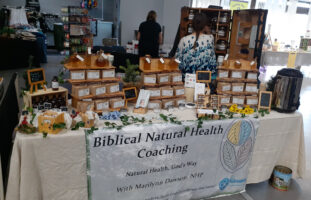This week, we’ve been very busy foraging around the barn property each evening. Coming home with more purple deadnettle, yarrow, discovered quite a bit of desert parsley we need to grab, and began picking arrowleaf balsomroot flowers for Ashley’s aromatic oil by maceration experiment.
Sidenote: We are planning Foraging Workshops for May 18th or 19th, and June 1st or 2nd. Newsletter subscribers were told about this first in the latest update of where we’ll be this spring. If you want to be informed of these dates as they develop, be sure to register for the newsletter in the left-hand sidebar here, checking your spam/junk folder for your confirmation link and welcome email. Reply to the welcome email with the dates you’d like to attend. A cost will be involved and announced closer to these dates. Now back to today’s subject matter:
 Apparently according to old books from over 200 years ago, this was how perfumeries got their perfume oils before distillation became the rage for making essential oils. The arrowleaf balsomroot flower has an interesting scent. It first strikes you as having a quiet vanilla scent, continue sniffing, and you discover a sweet note reminiscent of white baking chocolate. . . I joked to Ashley that it smells like the baking ingredients cupboard!
Apparently according to old books from over 200 years ago, this was how perfumeries got their perfume oils before distillation became the rage for making essential oils. The arrowleaf balsomroot flower has an interesting scent. It first strikes you as having a quiet vanilla scent, continue sniffing, and you discover a sweet note reminiscent of white baking chocolate. . . I joked to Ashley that it smells like the baking ingredients cupboard!
As people do seem to like their vanilla scents almost as much if not equal to their love of anything sandalwood, we looked around the barn’s forested hillsides, saw all the flowering plants, and realized that if we took just one flower from each plant, we’d have loads! Our second grocery bag full came home yesterday, and there’s still a whole other patch we haven’t gotten to yet.
Unlike typical ancient methods, we aren’t going to use fresh flowers, we are going to dry them first. You typically see dried flowers, barks, seeds, etc, in potpourri pouches, but we are going to crush them into oil over a double boiler instead, and see how that works. Double-boilers allow for water to boil underneath without affecting the warm oil in the pot above.
Those that practised the maceration method claim that they could generally get 7 to 9 infusions done before the oil would no longer accept anything further from the herb. This is known as the saturation point. All liquids used as solutes for herbal extraction, have a point at which they can’t pull anything further from the herb. In recent years, this is causing those who test their ambient temperature water, oil, alcohol, or vinegar batches, to observe that in most cases, leaving the jar to infuse for 14 days is often all the solute can handle and anything after that is wasted time. This observation goes against common advice to let your infusion sit in a cool, dry, dark place for 4 to 6 weeks. But it’s what people who test their solutions are saying.
Ashley has been making ambient oil infusions for various purposes that we don’t need the speed of double-boiling for, and dating them for change-out at 14 days, doing just two rounds per oil batch, and even at just two rounds at the slower ambient temperature method, you can smell the infused herb after straining. The heated maceration method speeds up the process, and using the method a herbalist taught us almost 9 years ago, we will take those 200 yr old methods and take roughly 2 to 3 days to make an aromatic oil as opposed to 14 days multiplied by 7 to 9 strain/new herb rounds.
She’s gathering other ingredients as well, such as cedar trimmings from the hedge being chopped down to size outside our home. Cedar oil is another aromatic people love. But it is also an example of an industry that to this day, is outright lying to buyers who seem more interested in the final scent, than in the reality of the herb that created the scent.
 Several ancient perfumery books give recipes for creating “essence of cedar” or “essence of rose” or “essence of lavender”, etc. In reality, cedar doesn’t feature in “essence of cedar” at all, Virginia Juniper does!!! “Essence of rose” recipes call for more “geranium oil” than they do actual rose oil, and even then, what is termed “geranium oil” to this day, is not made from real geraniums, but from a related cousin known as pelagonium instead.
Several ancient perfumery books give recipes for creating “essence of cedar” or “essence of rose” or “essence of lavender”, etc. In reality, cedar doesn’t feature in “essence of cedar” at all, Virginia Juniper does!!! “Essence of rose” recipes call for more “geranium oil” than they do actual rose oil, and even then, what is termed “geranium oil” to this day, is not made from real geraniums, but from a related cousin known as pelagonium instead.
The number of recipes Ashley found for what you’d assume were single-herb ingredients, actually put both of us in a severely bad mood! Neither of us can stand when governments, corporations, or people lie to us! But that’s what they’re doing, and people don’t seem to care, they buy the product without question. Knowing what we know now, I had to ask if Sandalwood is even a real ingredient. She looked that up and it honestly is a real single-herb ingredient, but so many we learned aren’t, that it had us grumbling badly!
If her experiments pan out as anticipated, and depending on answers we get back from Interior Health on the creation and selling of aromatic oils using dried herb in oil over a double-boiler, we hope to eventually be selling macerated aromatic oils at her table in the months ahead. Perfumeries generally let their oils age for awhile before selling them, so here’s to the next adventure, whether for our own use, or for public sale.





